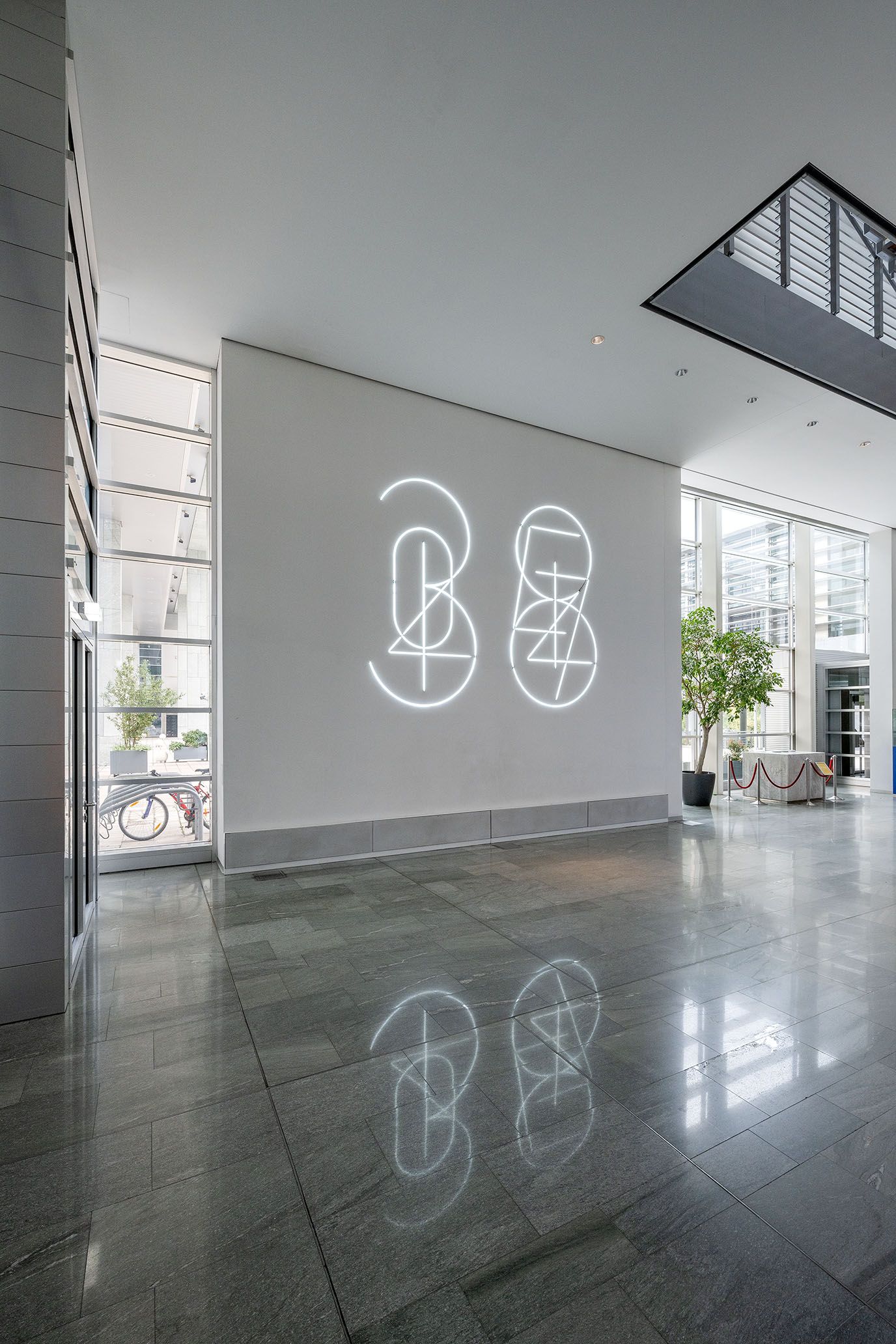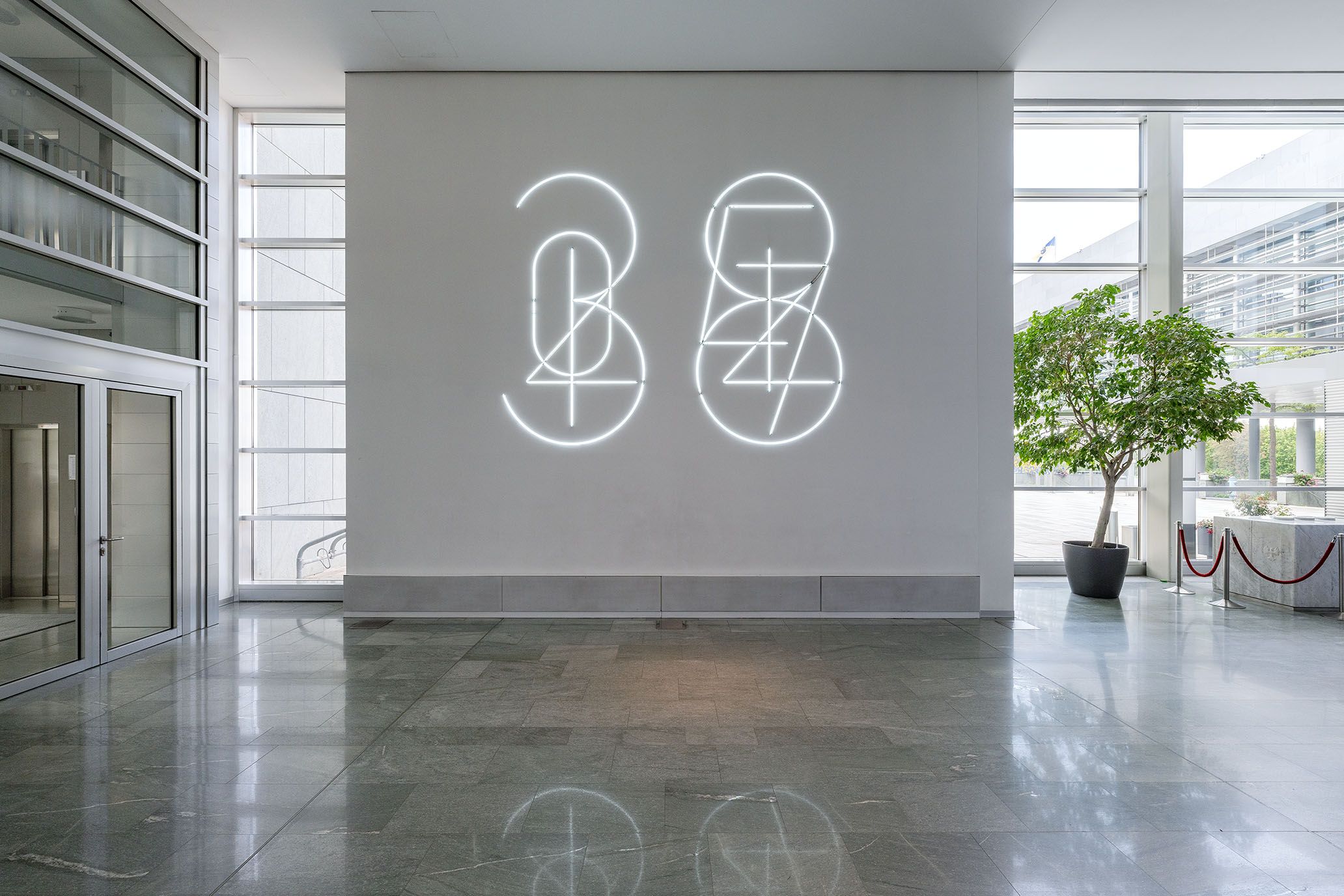Brigitte Kowanz
:
Installation in the Government District St. Pölten
Back
Information
The two-stage competition provided the background to the artistic intervention in St. Pölten, for which seven artworks by Austrian artists were recommended for realisation. These projects are by Josef Danner, Bruno Gironcoli, Richard Hoeck, Hans Kupelwieser, Christoph Steffner, Thomas Stimm and Heimo Zobernig. Five commissions for interiors were awarded directly, to Gunter Damisch, Franz Graf, Brigitte Kowanz, Eva Schlegel and Walter Vopava. The winning project in a separate competition for the design of the chapel (1995) is by Arnulf Rainer. Additional existing artworks by Franz Xaver Ölzant, Oskar Putz and Ruth Schnell are also to be found in the Regierungsviertel. Works by Dara Birnbaum and Michelangelo Pistoletto, also selected by the first jury, are not realized.
Clocks and calendar objects constitute one of Brigitte Kowanz's large group of works. These pieces, which combine light with time, can also be used and are thus integrated in a functional context. Directly resulting from a specific setting, the calendar, sensibly placed in the large lobby, is very appealing. Through the interplay of light and the changing time indicated it becomes functional. It is thus one of the most acclaimed artworks in the provincial parliament building. Brigitte Kowanz focuses on light. In an interview she once said: "What interests me in particular about the medium is that it, unlike hardly any other, shows time and speed, has an existence of its own and thus constitutes a special feature of our reality..." Light (Brigitte Kowanz works mainly with white light) is thus a pictoral medium in its own right, creating light spaces, light objects and/or glass constructions which have evolved since the early eighties. Later elements such as the "self-descriptive potential of light" (Rainer Fuchs), language, conceptual notions and numbers are added: "The metric illustration of the speed of light as what could be described as its capillary location reflects it just as much as those tautological figures of speech in which the visibility of light and the designation of this visibility are addressed in an infinite plethora of idioms: Light is what you see." (Rainer Fuchs)
Images (4)




